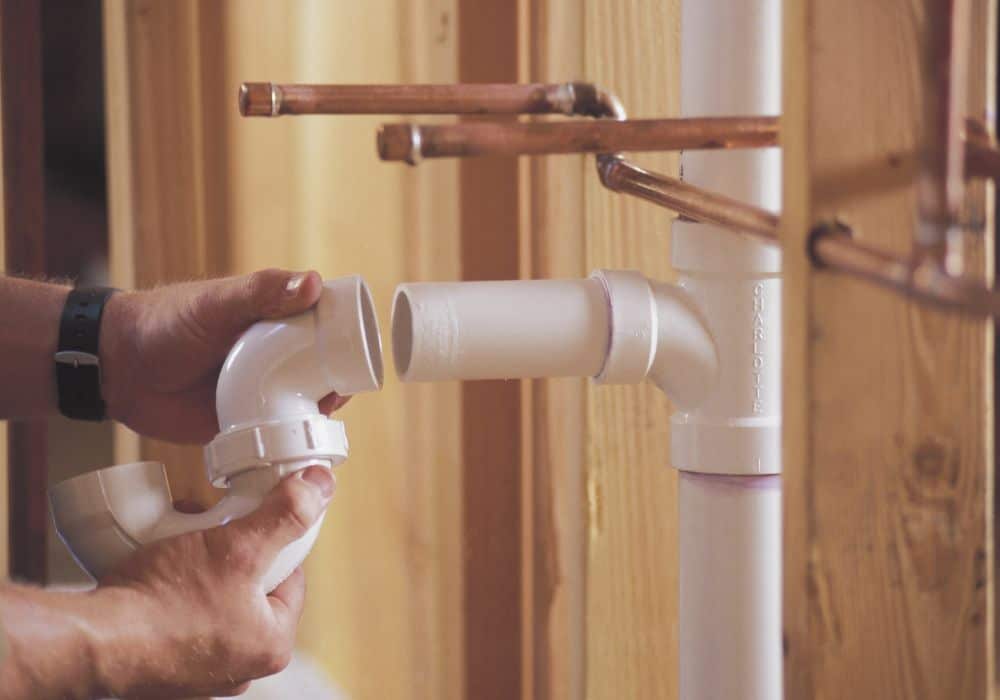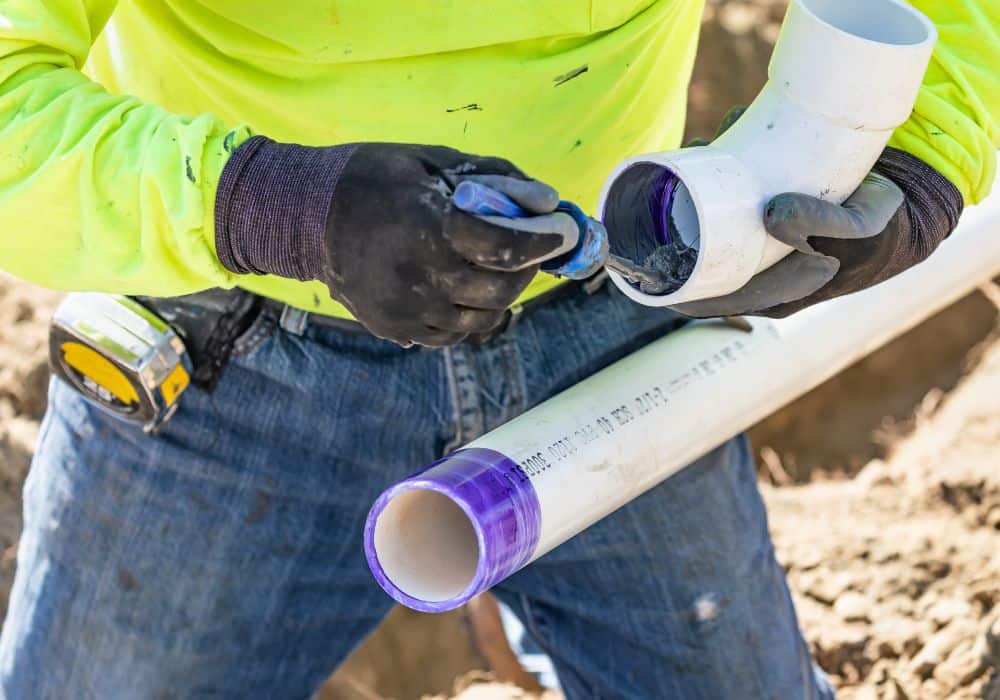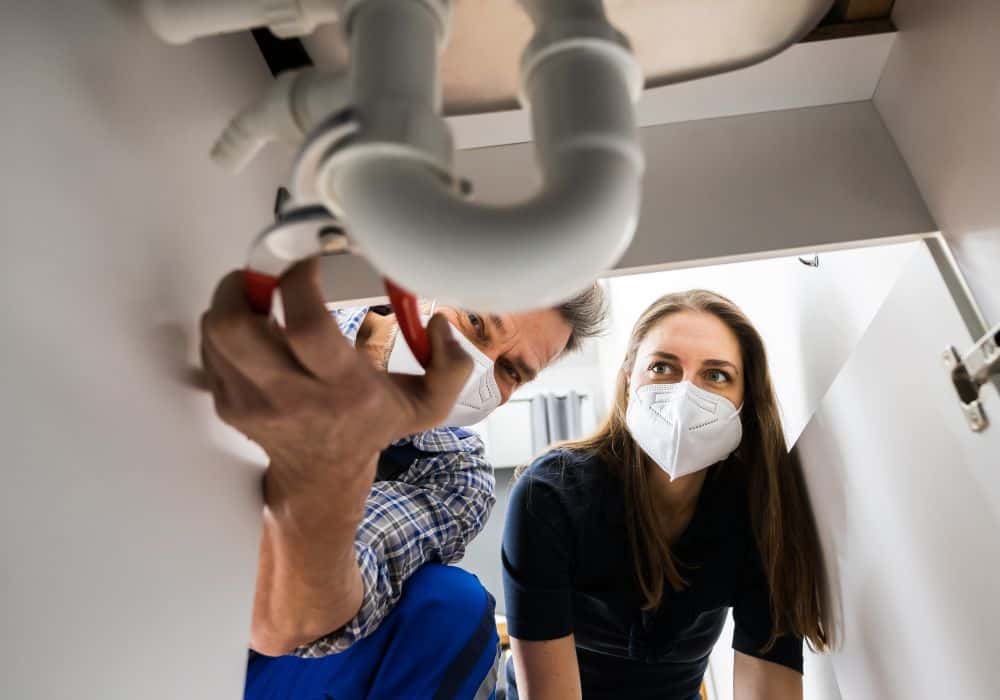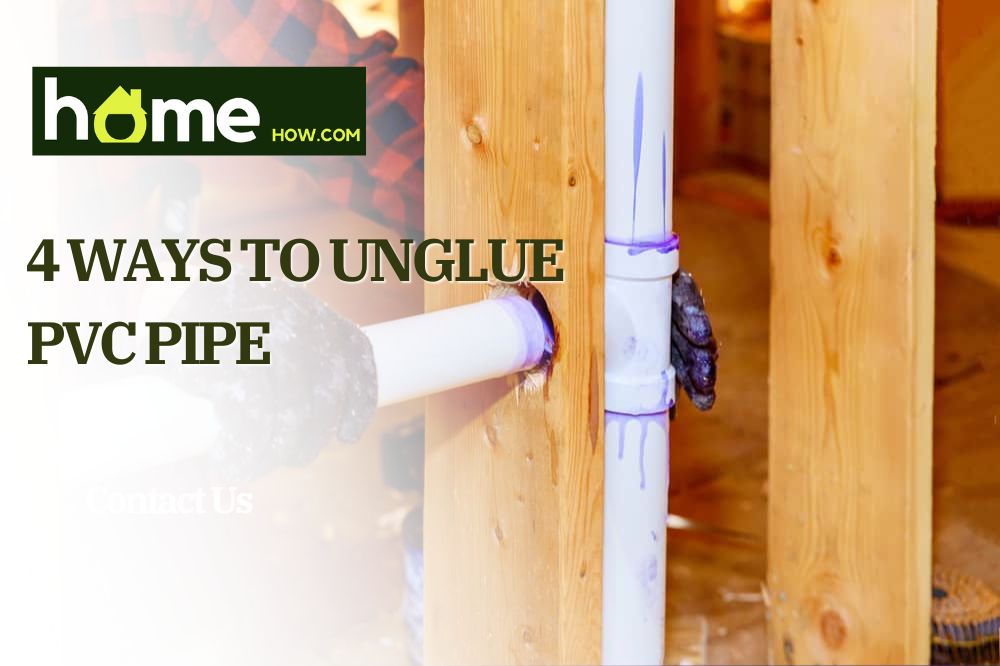PVC pipe is great when you want to have a joint that remains strong and is easily glued to other things. Once a PVC joint is put into place with glue, you are not going to be able to dissolve that solvent. It is there, and it’s there for good.
So, what happens if you made a mistake? Your PVC cement already dried, so it’s not like it’s going to get loose anytime soon. Technically, you cannot unglue a PVC pipe that has already had adhesives glued to it.
Thankfully, you don’t have to panic. There are ways to fix PVC pipes that have already been glued. We’re going to give you the most reliable one.
Tools needed
Now that you know there’s a way to fix it, you’re going to need to have the right tools on hand. Here’s a quick run-through of what you will need.
- A hacksaw
- Purple primer
- PVC cement
- A length of pipe similar to your PVC pipe
- New fittings and couplings
- A hairdryer/candle flame
PRO TIP – Not all cement glue is going to be usable on PVC piping. It has to say “PVC-ready” or similar on the package for it to bond properly to PVC. Most PVC cement is clear, so to a point, you can also spot it on the shelf easily.
Ways to remove PVC pipes that have already been glued

It’s important to remember that a PVC pipe can’t be unglued or unstuck if the glued area is dried. So, we’re going to introduce four options that can help separate PVC pipes.
1. Try to twist the pipe off
If the chemical solvent didn’t dry, you didn’t add the glue, didn’t add primer, or you don’t see the hardened glue from your project, use your hands to see if you can twist the glued pipe off your project. If you start feeling a little wiggle, keep twisting until the pipe gets unstuck.
It’s important to understand that PVC pipe glue is there to create a heavy-duty bond that doesn’t leak. When it’s used with the PVC primer, the glue is melted into the pipe. In other words, it’s a solvent weld. It’s stuck once it’s gotten to that point.
2. Use more glue
Surprising, isn’t it? Yes, you can use more glue to soften the pipes, though this can weaken your PVC pipe. The reason why adding more glue works deals with chemistry. It re-melts the PVC’s weld bond, weakening it until it can be pulled apart.
Here’s how to do it:
- Apply primer and let it dry over the glued area. Cover the area with purple and wait a couple of minutes.
- Apply a moderately thin layer of glue over the primer. Add it to both the couplings and the joints.
- Manually twist the pipe and fittings to help loosen those strong bonds. The glue is re-melting the PVC, so it actually works to loosen “impossible” glue. Keep twisting and pulling until the pipe pops out of its fitting.
3. Use heat to soften the PVC joints
Did you glue together two joints? Heat can be used to soften the PVC joints. With enough heat, you will be able to loosen the pipes enough to pull them apart. However, you can’t use those joints again if you are working with a pressurized system.
If you’re just making a small project like a hamster tube or a cold water pipe, it can still be an option to consider. Here’s how to do this:
- Use a hair dryer or candle to heat up the area where the two joints were glued. Keep the candle at a slight distance. You don’t want to burn the pipes.
- After the heat was applied, gently pull apart the PVC pipes. Twisting and loosening them will work.
- If heat doesn’t work, then you may need to try the third option. Otherwise, you should be good to go.
PRO TIP – If you need your PVC pipe to be sturdy for your projects, this is not the technique you want to use. Even if it does “unglue” your joints, it will weaken the overall structure of your pipe. This can cause PVC to become brittle and prone to cracking.
4. Cut and replace the piping
If you want to use the technique that professional plumbers prefer, then you are going to have to cut and replace the piping. This is the only option that fully guarantees that the piping will still be strong enough to be used in pressurized systems.
Here’s the step-by-step:
- Before cutting into anything, figure out what you did wrong and how to fix it. Did you use the wrong fitting? Was the pipe too long or too short? How do you want to fix this after you unglue the pipe? Make a mental note. If you can cut the fitting to fix it, do that instead of cutting the pipe.
- Measure the PVC piping that needs to be replaced or unglued, if you need to cut the piping out. If this is part of a plumbing system with multiple pipes, it’s best to know what length you can cut.
- Use a hacksaw to cut the portion of the pipe (or fitting) that needs to be unglued from your system. If you haven’t already, measure the diameter of the pipe. This way, you can go to the hardware store with confidence.
- Buy a new pipe (if necessary), fitting, and coupling for your project. If you run out of primer and glue, get those too.
- Apply purple primer to the edges of the piping and the couplings. Let the primer sit and dry for a few minutes.
- Add a coat of clear PVC cement glue to the area that has been primed. The purple color can help you ensure that you get the area to glue right.
- Place the new PVC pipe, fitting, or coupling in the place of the old pipe you sawed off. Let the glue dry, and you should be good to go.
Extended Tips
Fixing a mistake with PVC piping is not always easy. Let’s add some more tips to help make your job easier.
1. Choosing glue

If you are going to use PVC piping for plumbing or any other major product, make sure that you get the right glue. It will mention PVC on the package, and may even be called PVC cement glue instead of regular “cement glue.”
2. Clean up glue
Did you drop some PVC cement glue on your floor or cabinet? Don’t panic. Spills are a cinch to take care of and it’s not the end of the world. Dribble a small amount of acetone (like the nail polish remover your sister has!) on the spill.
The acetone will loosen the glue. Wipe up the loosened glue with a clean rag. You should be able to remove your glue without the need for rough sandpaper or a small plastic scraper in most cases.
3. Glue alternatives
You do not have to deal with a permanent fusion of PVC pipes if you don’t want to. If you are using the pipe for a fairly light project, you can also use super glue or a hot glue gun to join everything up.
Though you should always try to use PVC glue for a specific high-grade project, there are still ways to make your pipes stick together. With that said, you should always stick to cement glue made for PVC with a primer for pressurized systems. Otherwise, your pipes might pop out!
4. A better way to pull

How do you pull two fittings or couplings apart when your fingers hurt? Well, it’s simple. If you have a hard time getting a manual grip on the pipe, you can use a pair of pliers to pull them apart.
If you use this tip, be careful when you use those pliers. Be gentle. If you’re not, you may see a crack form in the pipes—or even a full break.
Conclusion
PVC pipe is exceptionally sturdy, especially when you take a look at how it reacts to being glued. For the most part, this is a major blessing. It means that you can expect to have a project that’s leak-free and durable for years to come as long as you use the right glue.
Of course, mistakes happen. That’s why it’s important to know how to fix “oops” before they happen. This article is specifically for that issue. With a little hope, you will never have to actually use this option as a plumber or DIYer.
Want to prevent this from being something you have to do? Measure everything carefully and triple-check your work before you glue it all.
